Disclaimer: As an affiliate I may earn a commission on any qualifying purchases, including those from Amazon.com, at no extra cost to you – read more.
At a first glance, hammocks might seem indistinguishable, but as you explore the options available, you’ll discover a whole world of hammocks with different styles, materials and features. In this article, I’m going to run through the 7 main types of hammock that you’ll come across along with the pros and cons of each in an easy-to-understand guide.
Each individual will have their own preference, particularly those who prefer spreader bars or not. Personally, I’m a big fan of the Mayan style for lounging around, but like a proper camping hammock when I’ll be spending the night in it. After reading this article and familiarizing yourself with the types of hammock, you can check out my best hammock guide which has my top recommended products.
- Jargon Busting
- Main Types of Hammock
- Rope Hammocks – Perfect for the beach
- Nicaraguan Hammock – Popular woven hammock with a spreader bar
- Quilted Hammocks – Double layered with padding inside
- Mayan Hammocks – Soft, stretchy and super comfortable
- Brazilian and Columbian Hammocks – Best hammock to replace your bed
- Camping Hammocks – For hikers and backpackers
- Poolside Hammocks – Fast drying
- Hammock Chairs – Popular for gardens or indoor spaces
- So, Which Type of Hammock is Most Comfortable?
Jargon Busting
Before we begin, I just wanted to take a moment to share some of the ‘hammock jargon’ that I’ll be mentioning throughout the article and what it actually means:
Gathered End vs Bridge
Gathered end hammocks are the most common hammock type, these are made from large rectangular material that is gathered together at the ends to create the banana shape we associate with them. Bridge hammocks are more commonly associated with camping and the outdoors but are still far less popular than gathered end. They are a bit harder to set up but can be much more stable
Open Loop vs Closed Loop
Open and closed loop refers to the loop that is used to attach the hammock to the tree, stand or anchor point. Most hammocks will have a closed loop as this can be easier to attach and more secure.
This is especially true for camping hammocks which often have a built-in carabiner clop that can also be considered a closed loop. However, some of the more casual hammocks, such as Columbian hammock, have an open loop which provides a much better balance.
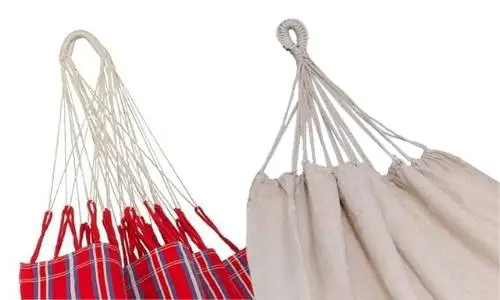
Spreader Bar
A spreader bar is the wooden bar that spans across the suspension strings of a hammock. Whether or not you choose to have a spreader bar will be up to personal preference. If you’re new to hammocks, some suggest that a spreader bar makes it easier to get in and out of. However, I personally find a non-spreader bar to be much easier.
The benefits of a spreader bar include an unobstructed view of your surroundings and if you’re a side sleeper, you might benefit from a spreader bar. However, spreader bars give hammocks a higher centre of gravity, which can make them more prone to tipping.
Main Types of Hammock
As promised, here is my full breakdown of the 7 most popular kinds of hammock:
Rope Hammocks – Perfect for the beach
A rope hammock is the oldest and simplest style of hammock that you might typically think of when you imagine an idyllic beach scene.
These are usually made of cotton or polyester rope in an open weave that leaves plenty of holes for air flow. Cotton is the preferred choice as it is slightly more elastic which gives added comfort; however, polyester is a bit more durable, so each have their advantages.
They are especially great on the beach as sand does not accumulate inside as with fabric hammocks. They can be found with and without spreader bars.
Rope hammocks can be hit or miss in terms of comfort, typically thicker cotton ropes will be more comfortable than thinner ropes which have a tendency to dig in to your skin and can leave you with a less-than-fetching pattern on your back from the ropes.
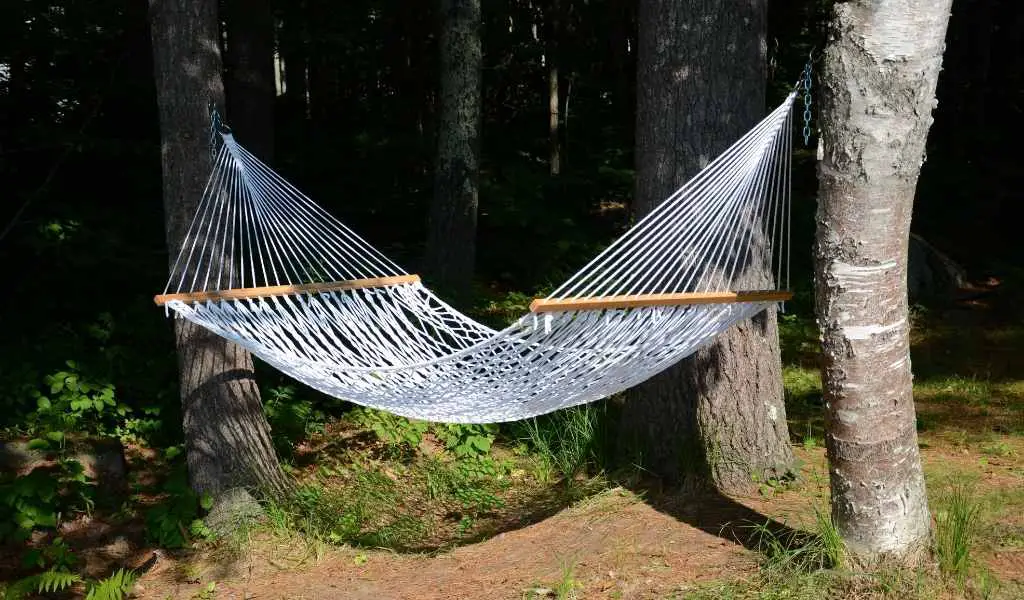
Nicaraguan Hammock – Popular woven hammock with a spreader bar
This type of hammock usually consists of woven material with a wooden spreader bar. They were first conceived in Nicaraguan but are now very popular in North America and a staple in the garden. They will usually have a closed loop for easy hanging.
A traditional Nicaraguan hammock would be lavishly decorated with tassels and a vibrant pattern, however they are also found in more simpler designs these days.
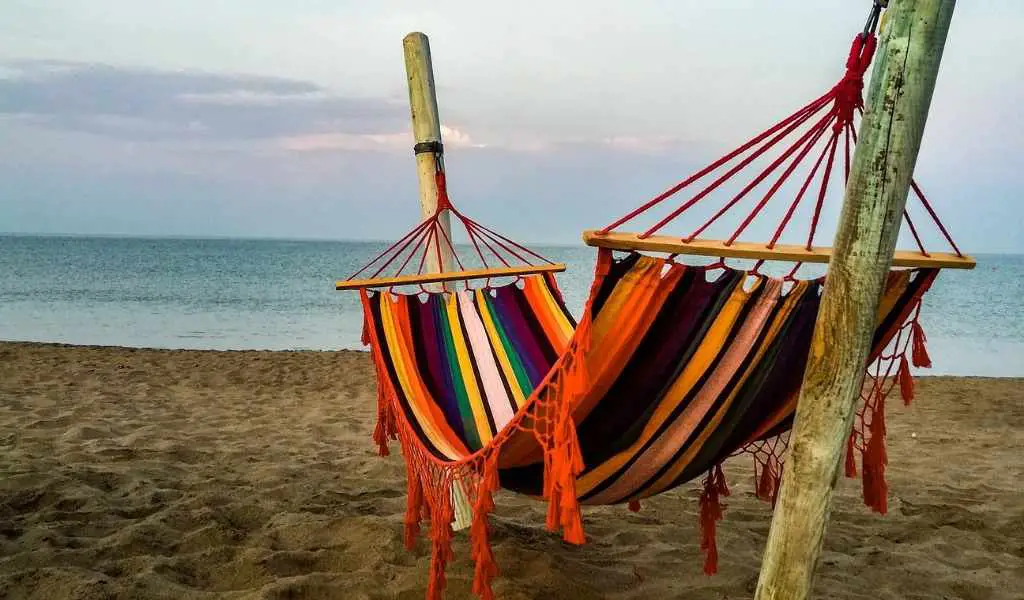
Quilted Hammocks – Double layered with padding inside
This type of hammock has two layers of fabric with some sort of padding in the middle. This adds extra comfort, but means they are usually harder to care for. The outside layer is usually
A quilted hammock will usually have spreader bars, this means they can’t easily be transported so are generally for home use, or occasionally to take out to the beach.
Quilted hammocks often come in large sizes making them a great choice for more than one person to lounge on at a time.
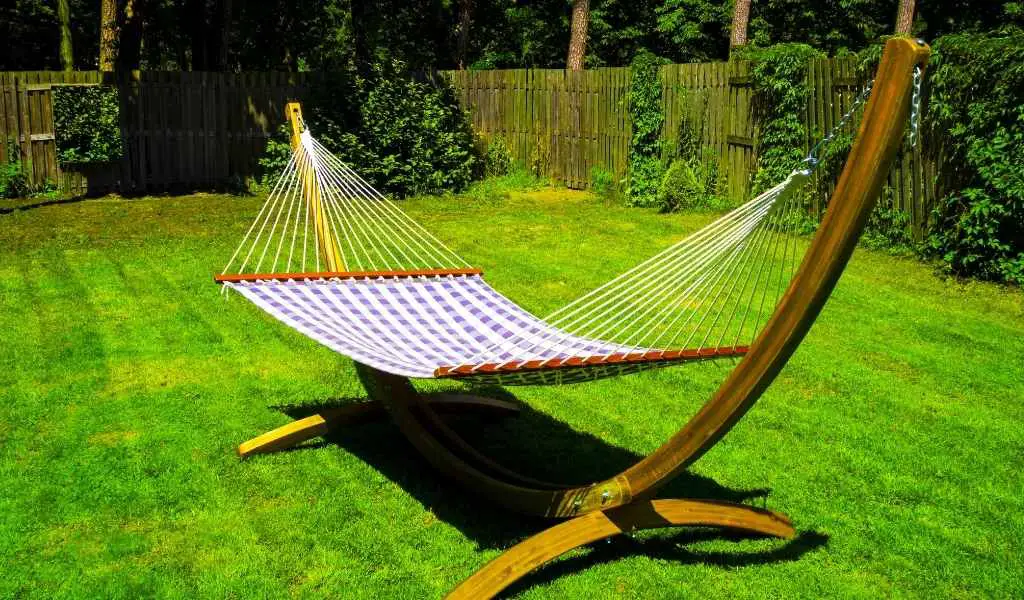
Mayan Hammocks – Soft, stretchy and super comfortable
Mayan is one of the most popular styles of gathered end hammock. At first glance, it looks like a fabric hammock, but it’s actually more like a woven net or mesh with really thing cotton threads. This means it’s really soft and the cotton is quite stretchy, so it moulds really well to the shape of your body and personally I find it to be one of the most comfortable. You could think of them as the Foamex mattress of the hammock world.
Because they are so lightweight and don’t have a spreader bar, Mayan hammocks are one of the easiest types of hammock to transport, although they aren’t the most durable and holes can start to appear after prolonged use.
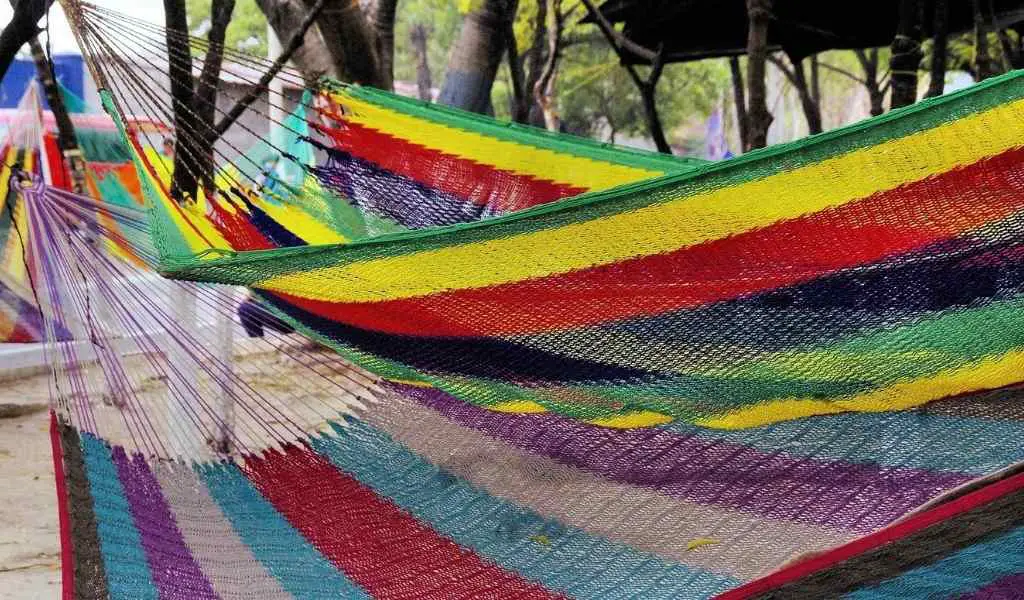
Brazilian and Columbian Hammocks – Best hammock to replace your bed
This is another popular type of gathered end hammock from South America, it’s quite similar looking in style to the Mayan hammocks, but the material is a bit thicker. These are often made from either polyester or cotton threads that are handmade and tightly wove.
Brazilian hammocks are often touted as the best hammock to replace your bed. If hung correctly, Brazilian hammocks are designed to have a really deep sag which makes it super comfortable when laying diagonally which makes it cosy to sleep at night. This also brings the centre of gravity much lower, so chances of tipping are very slim.
A Columbian hammock is very similar to a Brazilian hammock, the key differences lie in the suspension strings. A Columbian hammock has cotton plaits (called cadejos) which gives the hammock a great weight distribution. The loop at the top is usually kept open too, you can see them making Columbian hammocks in this video.

Camping Hammocks – For hikers and backpackers
Camping hammocks have been designed especially for outdoor use, so they are particularly durable and often have been made to be very weatherproof.
You’ll usually find these hammocks made from a lightweight ripstop nylon, or sometimes polyester. That’s because ripstop material has an excellent weight to strength ration which is key when you’ll be lugging it around all day.
Camping hammocks will usually come in their own bag allowing you to pack them up again tightly afterwards to maximise space in your backpack. Some camping hammocks will have a built-in mosquito net, making them ideal for jungle trekking.
Whilst camping hammocks are typically in the gathered end style, sometimes they will be in the bridge style which uses spreader bars designed to allow the occupant to lie flat whilst providing support from the hammocks edges that wrap around their side. Both a gathered end and bridge style camping hammock are featured here.

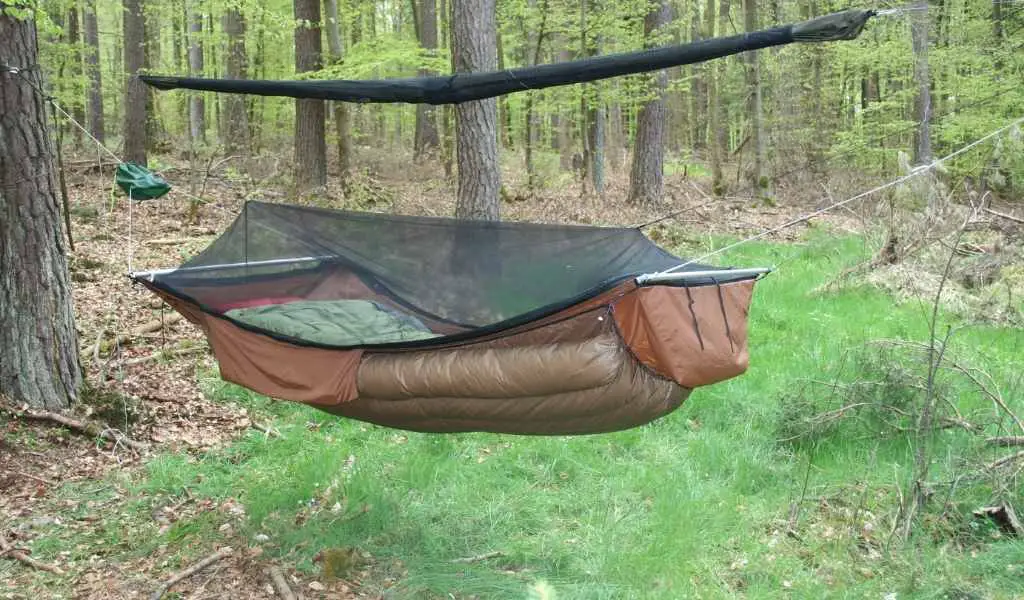
Poolside Hammocks – Fast drying
Poolside hammocks are lightweight water-resistant hammocks that are commonly found by pools. These are usually made of polyester that has been treated with PVC before being woven, this is what gives them a water-resistant effect and ensures they dry super quickly.
Because the material has been treated, they aren’t the most comfortable of hammock, but provide an easy way to relax by the pool without worrying about getting your hammock wet. These types of hammock can also be left out in the rain due to their waterproof properties. These hammocks can be seen with or without spreader bars.
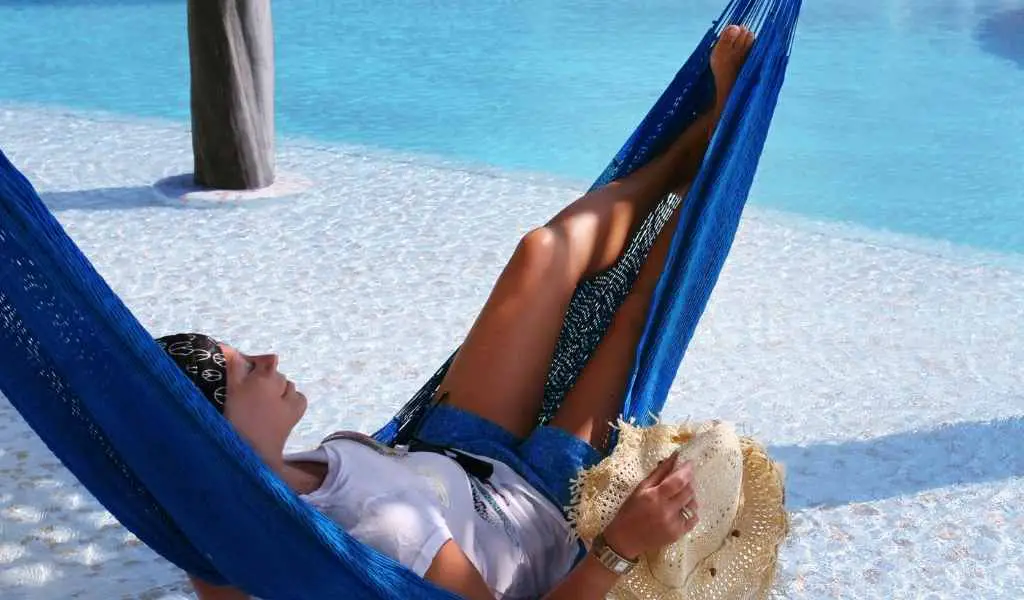
Hammock Chairs – Popular for gardens or indoor spaces
Hammock chairs are designed in a similar way to regular hammocks, but your body will be in a more upright seated position, as opposed to lying down.
These are popular in smaller gardens or indoor as they take up much less room than a traditional hammock. You can easily hang these from a ceiling inside, a tree or even in a boat.
They are typically made from a woven fabric such as cotton, canvas or polyester, and utilise a single wooden bar that provides the stability across the top.
The term hammock chair and swinging chair are often used interchangeably, however swinging chair is a much broader term that also includes egg chairs, basket chairs and more.
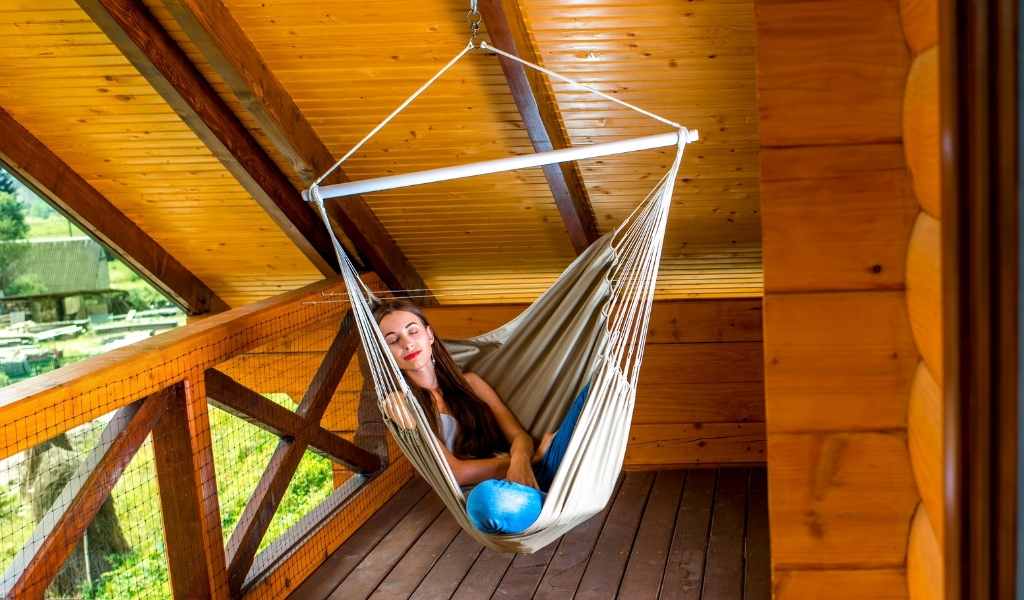
So, Which Type of Hammock is Most Comfortable?
Typically, a Mayan or Brazilian hammock will provide the most comfort. These don’t have spreader bars so are better at moulding to the shape of your body, and they are usually made from a soft and stretchy material such as cotton. However, some people don’t enjoy the enclosed feeling from the hammock wrapping around so may opt for a quilted hammock instead. At the end of the day, there are plenty of options to choose between so it will always come down to personal preference.
Featured image credit: Zach Betten on Unsplash

